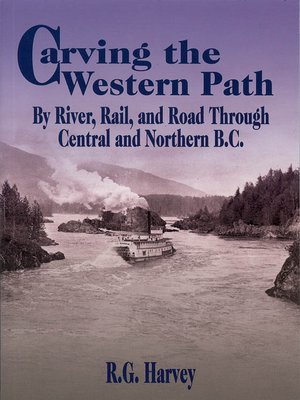By River, Rail, and Road Through Central and Northern B.C.
ebook ∣ Carving the Western Path
By R. G. Harvey

Sign up to save your library
With an OverDrive account, you can save your favorite libraries for at-a-glance information about availability. Find out more about OverDrive accounts.
Find this title in Libby, the library reading app by OverDrive.



Search for a digital library with this title
Title found at these libraries:
| Library Name | Distance |
|---|---|
| Loading... |
The history of British Columbia's transportation systems north of the Canadian National Railway's mainline may not be well known—but it certainly is colourful. Continuing the story he began in the first volume of Carving the Western Path, R.G. Harvey describes the development of river, road and rail routes that crossed the northern two-thirds of BC.
This was a land of dreams and schemes that seemed to feed on each other. It started with the Collins Overland Telegraph, a communication link that was to connect Europe and America in the 1860s. Though this plan collapsed with the success of the trans-Atlantic cable, the telegraph surveyors established patterns for future roads and settlement. They also sparked the Omineca gold rush.
It was a land full of larger-than-life characters, including:
Their stories mingle with those of the Grand Trunk Pacific Railway, the Alaska Highway, the White Pass and Yukon Railway and those of the sternwheelers, fur traders, gold miners and other adventurers who were drawn to this last frontier.







